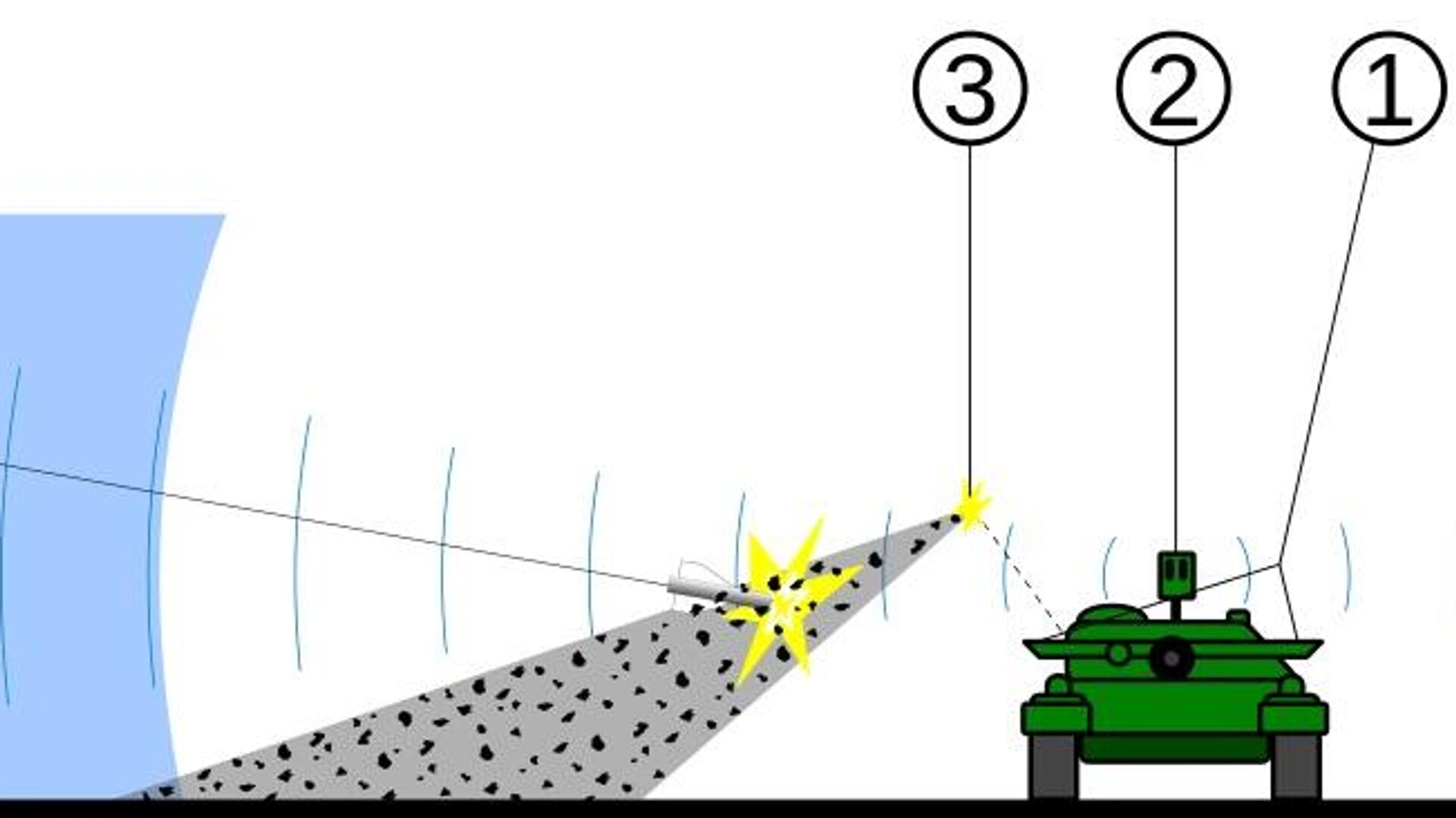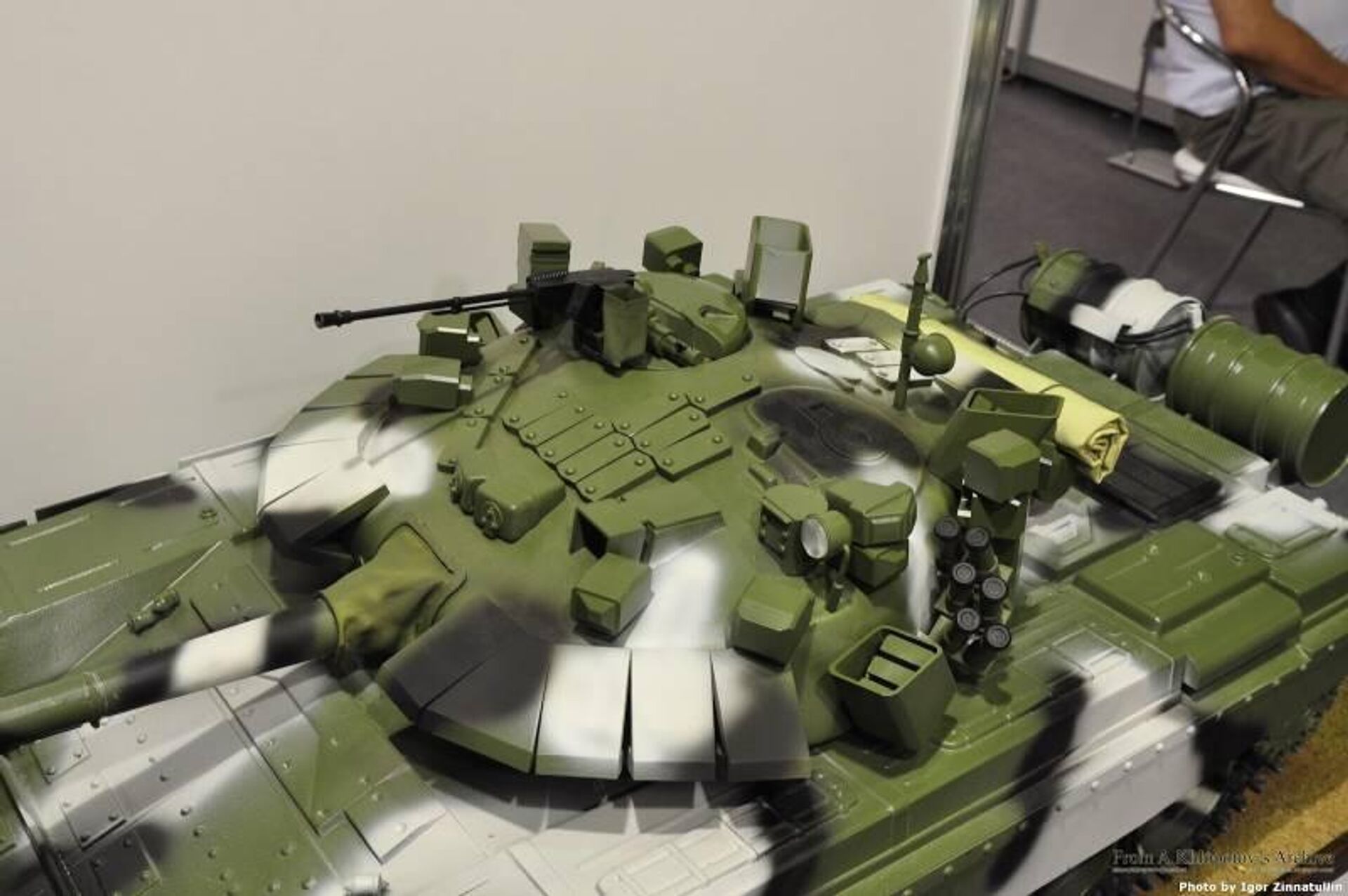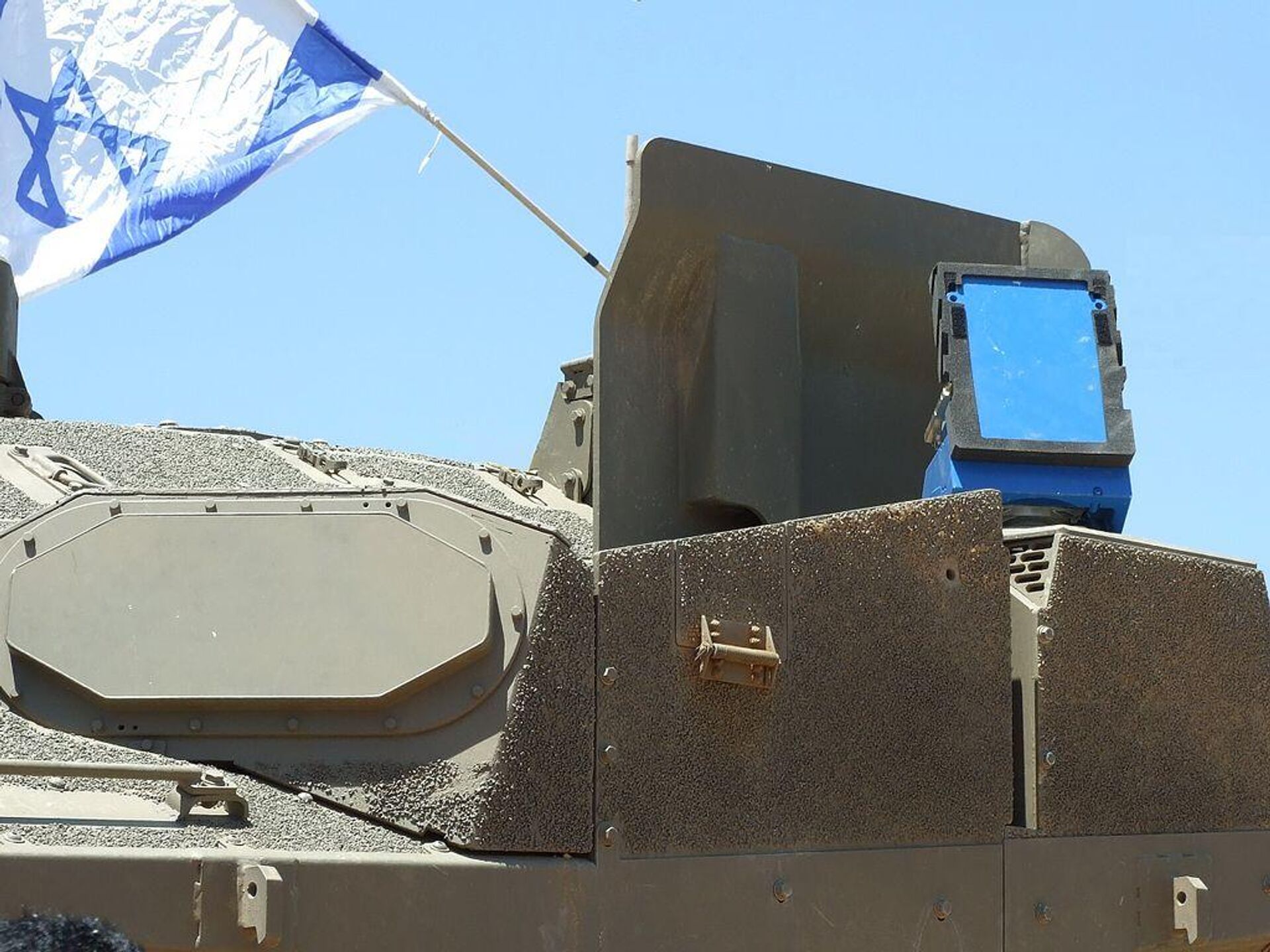https://sputnikglobe.com/20240217/arena-m-russias-unique-javelin-stopping-active-protection-system-1116844500.html
Arena-M: Russia’s Unique Javelin-Stopping Active Protection System
Arena-M: Russia’s Unique Javelin-Stopping Active Protection System
Sputnik International
The proxy war in Ukraine has debunked the notion that tanks are a relic of 20th century warfare, with both sides attempting to use them for rapid breakthroughs across a broad front. But along with their firepower, tanks also come with major vulnerabilities – particularly to anti-tank missiles. That’s where systems like the Arena-M come in.
2024-02-17T15:25+0000
2024-02-17T15:25+0000
2024-02-17T15:25+0000
military
russia
ussr
ukraine
military & intelligence
nato
kbp instrument design bureau
t-55
javelin
t-80
https://cdn1.img.sputnikglobe.com/img/07e8/02/11/1116843685_174:0:825:366_1920x0_80_0_0_1a182ce62cc816ad7ff52b2bce87eb49.jpg
Russia’s defense minister visited military factories in Moscow region this week to audit the production of promising weapons systems. During the trip, he was shown a modernized variant of the Arena-M active protection system (APS).“This active protection complex, designed to protect against enemy anti-tank weapons, has been submitted for qualification tests. At the same time, we’re working to improve the complex for protection against loitering drones,” Valery Kashin, chief designer at the Mashinostroyeniya Construction Bureau, creators of the Arena-M, told the minister.What is Active Protection?Active protection is any defensive system developed for use by military vehicles - tanks, armored transports, aircraft, etc., and designed to prevent enemy projectiles from striking and destroying vehicles, either by interfering with (kinetically or by other means), destroying or greatly weakening their striking power.The earliest active protection measures were developed during the Second World War, with Nazi Germany deploying Nebelwurfgerät turret-mounted smoke grenade launchers on some tank models from 1942 onward, and Soviet heavy tanks starting with the IS-3 appearing in 1945 fitted with rear-mounted smoke dispensers designed to shield their fellow tank companies and advancing troops.The USSR created the first truly modern hard-kill active protection system, the Drozd (lit. ‘Thrush’) in the late 1970s. Development was spearheaded by the Tula-based KBP Instrument Design Bureau. The Drozd uses a 24.5 GHz Doppler radar working in combination with an onboard computer to detect incoming enemy projectiles in the 70-700 meters per second range (to avoid fire against faster but less dangerous incoming fire like small arms bullets) at distances up to 330 meters, at an azimuth of 80 degrees and an elevation angle of 20 degrees. Readiness time for the system was 0.35 seconds.The Drozd’s kinetic complement consists of eight guides, four apiece on either side of the tank’s tower, with munitions meant to defeat enemy anti-tank projectiles consisting of a 9 kg 107 mm fragmentation warhead fired when the enemy projectile approaches to within 6-8 meters of the tank, meeting it head on and destroying it before it can hit the vehicle. Calculations for fire were carried out automatically by the system’s onboard computer.The Drozd passed military tests in 1983 and began to be installed en masse aboard the T-55A medium tank, seeing limited action in Afghanistan, but began to be discontinued and eliminated after Soviet leader Mikhail Gorbachev signed the 1990 Treaty on Conventional Armed Forces in Europe, which ultimately led to the liquidation of the USSR’s T-55 inventories.The Drozd would ultimately be displaced by the Shtora-1 (lit. ‘Curtain-1’) electro-optical active protection suite, which featured a combination of a smoke screen dispenser, laser warning system to detect laser-guided missiles, and pulsed infra-red jamming system.What is the Arena Active Protection System?Unlike the Drozd, the Shtora-1 is a soft-kill APS, with no kinetic protection to speak of. That means that if an enemy projectile is sophisticated enough to overcome its various passive defense means, the tank becomes a sitting duck.This made it necessary to create a new generation of active protection, with the Mashinostroyeniya Construction Bureau taking on the lead on the project in the late 1980s. The Arena APS was unveiled in 1997. Like the Drozd, the Arena is programmed not to react to small arms fire, as well as low-speed objects like birds, debris or clumps of earth (like the Drozd, targeting projectiles in the 70-700 meters/second range). The system provides all-round protection at elevation angles from -6 to +20 degrees.The Arena’s anti-projectile rounds are situated around the perimeter of the tank’s turret in special shafts. The all-weather system remains operational while the tank is on the move and while turning its turret. The Arena is also designed to protect nearby friendly infantry by reducing the danger zone from its operation to distances of about 20-30 meters, with a signal light warning troops nearby when the system is turned on.Why Was the Arena-M Developed?The Arena-M (‘M’ for ‘Modernized’) is an upgraded variant of the Arena whose development began in the early 2010s. Operating along the same kinetic principles as the base model, the Arena-M’s innovations are thought to include a number of important differences, including:Additional details on the improved Arena-M are hard to come by. It also remains unclear when the system will be introduced into service (plans include equipping them in T-72B3M, T-80 and T-90M series tanks). Russia’s innovative active protection systems for tanks are unique in the world, with NATO countries’ forays in the area slowing to a crawl after the collapse of the USSR and the disappearance of fears of hordes of Soviet tanks streaming into West Germany and marching toward La Manche. The US began equipping its Abrams series tanks with the Israeli Trophy kinetic active protection systems only in 2018, with Germany signing a contract with Israel to purchase the Trophy for its Leopard 2 tanks in 2021.Western MBTs equipped with the Trophy have not been seen so far in Ukraine, with the system first used during Israel’s ‘Operation Protective Edge’ in Gaza in 2014. The system’s performance in the ongoing Gaza war leaves many questions unanswered, with dozens of Israeli Merkava Mk 3 and Mk 4 tanks confirmed lost or heavily damaged against lightly-armed Hamas fighters. It’s unknown how many of them were armed with Trophies.
russia
ussr
ukraine
Sputnik International
feedback@sputniknews.com
+74956456601
MIA „Rosiya Segodnya“
2024
News
en_EN
Sputnik International
feedback@sputniknews.com
+74956456601
MIA „Rosiya Segodnya“
Sputnik International
feedback@sputniknews.com
+74956456601
MIA „Rosiya Segodnya“
what is an active protection system, what is russia's arena-m active protection system, what active protection systems does russia have
what is an active protection system, what is russia's arena-m active protection system, what active protection systems does russia have
Arena-M: Russia’s Unique Javelin-Stopping Active Protection System
The proxy war in Ukraine has debunked the notion that tanks are a relic of 20th century warfare, with both sides attempting to use them for rapid breakthroughs across a broad front. But along with their firepower, tanks also come with major vulnerabilities – particularly to anti-tank missiles. That’s where systems like the Arena-M come in.
Russia’s defense minister visited military factories in Moscow region this week to audit the production of promising weapons systems. During the trip, he was
shown a modernized variant of the
Arena-M active protection system (APS).
“This active protection complex, designed to protect against enemy anti-tank weapons, has been submitted for qualification tests. At the same time, we’re working to improve the complex for protection against loitering drones,” Valery Kashin, chief designer at the Mashinostroyeniya Construction Bureau, creators of the Arena-M, told the minister.
What is Active Protection?
Active protection is any defensive system developed for use by military vehicles - tanks, armored transports, aircraft, etc., and designed to prevent enemy projectiles from striking and destroying vehicles, either by interfering with (kinetically or by other means), destroying or greatly weakening their striking power.
For ground vehicles, active protection can be divided into two subcategories: ‘soft-kill’ and ‘hard-kill’ measures. The former include things like smoke grenades, dazzlers, infrared emitters and other means to disrupt enemy targeting. The latter protect vehicles by destroying or damaging enemy projectiles directly using kinetic force, safely detonating them outside the vehicle’s range, causing premature detonation of onboard explosives, or otherwise decreasing effectiveness to increase vehicle and crew survivability.
The earliest active protection measures were developed during the Second World War, with Nazi Germany deploying Nebelwurfgerät turret-mounted smoke grenade launchers on some tank models from 1942 onward, and Soviet heavy tanks starting with the IS-3 appearing in 1945 fitted with rear-mounted smoke dispensers designed to shield their fellow tank companies and advancing troops.
The USSR created the first truly modern hard-kill active protection system, the Drozd (lit. ‘Thrush’) in the late 1970s. Development was spearheaded by the Tula-based KBP Instrument Design Bureau. The Drozd uses a 24.5 GHz Doppler radar working in combination with an onboard computer to detect incoming enemy projectiles in the 70-700 meters per second range (to avoid fire against faster but less dangerous incoming fire like small arms bullets) at distances up to 330 meters, at an azimuth of 80 degrees and an elevation angle of 20 degrees. Readiness time for the system was 0.35 seconds.
The Drozd’s kinetic complement consists of eight guides, four apiece on either side of the tank’s tower, with munitions meant to defeat enemy anti-tank projectiles consisting of a 9 kg 107 mm fragmentation warhead fired when the enemy projectile approaches to within 6-8 meters of the tank, meeting it head on and destroying it before it can hit the vehicle. Calculations for fire were carried out automatically by the system’s onboard computer.
The Drozd passed military tests in 1983 and began to be installed en masse aboard the T-55A medium tank, seeing limited action in Afghanistan, but began to be discontinued and eliminated after Soviet leader Mikhail Gorbachev signed the 1990 Treaty on Conventional Armed Forces in Europe, which ultimately led to the liquidation of the USSR’s T-55 inventories.
The Drozd would ultimately be displaced by the Shtora-1 (lit. ‘Curtain-1’) electro-optical active protection suite, which featured a combination of a smoke screen dispenser, laser warning system to detect laser-guided missiles, and pulsed infra-red jamming system.
What is the Arena Active Protection System?
Unlike the Drozd, the Shtora-1 is a soft-kill APS, with no kinetic protection to speak of. That means that if an enemy projectile is sophisticated enough to overcome its various passive defense means, the tank becomes a sitting duck.
This made it necessary to create a new generation of active protection, with the Mashinostroyeniya Construction Bureau taking on the lead on the project in the late 1980s. The Arena APS was unveiled in 1997.
Building on the innovations pioneered by the Drozd, the Arena similarly uses a multifunctional, jamming-resistant Doppler radar to detect enemy projectiles, waiting for them to approach to within a short distance of the tank and firing projectiles to eliminate them. The system operates automatically, and comes with a more powerful tracking and targeting computer. Target detection and destruction taking place within 70 milliseconds, and a second defensive shot can be prepared within 200-400 milliseconds.
Like the Drozd, the Arena is programmed not to react to small arms fire, as well as low-speed objects like birds, debris or clumps of earth (like the Drozd, targeting projectiles in the 70-700 meters/second range). The system provides all-round protection at elevation angles from -6 to +20 degrees.
The Arena’s anti-projectile rounds are situated around the perimeter of the tank’s turret in special shafts. The all-weather system remains operational while the tank is on the move and while turning its turret. The Arena is also designed to protect nearby friendly infantry by reducing the danger zone from its operation to distances of about 20-30 meters, with a signal light warning troops nearby when the system is turned on.
Why Was the Arena-M Developed?
The Arena-M (‘M’ for ‘Modernized’) is an upgraded variant of the Arena whose development began in the early 2010s. Operating along the same kinetic principles as the base model, the Arena-M’s innovations are thought to include a number of important differences, including:
Maneuverable defensive sub-munition allowing the system to cover a wider area with fewer fires.
360 degree protection, including the upper hemisphere, creating a difficult-to-penetrate dome of cover around the tank.
Improved armor protection for system components from small arms fire and fragmentation blasts.
Modified configuration of system components on the tanks (as seen in exhibitions and publicly released testing photos) including the installation of multiple separate antennas for the radar along the perimeter of the tank, and a reconfigured anti-missile munition housing divided into multiple blocks, which should simplify retrofitting and repairs.
In 2017, developers
promised that the Arena-M would be able to protect against the US TOW anti-tank system, one of the deadliest anti-tank missiles in the US arsenal today. The system is also expected to be effective against true top attack anti-tank missiles like the Javelin, which has been deployed widely by NATO countries to Ukraine.
Additional details on the improved Arena-M are hard to come by. It also remains unclear when the system will be introduced into service (plans include equipping them in T-72B3M, T-80 and T-90M series tanks).
Russia’s innovative active protection systems for tanks are unique in the world, with NATO countries’ forays in the area slowing to a crawl after the collapse of the USSR and the disappearance of fears of hordes of Soviet tanks streaming into West Germany and marching toward La Manche. The US began equipping its Abrams series tanks with the Israeli Trophy kinetic active protection systems only in 2018, with Germany signing a contract with Israel to purchase the Trophy for its Leopard 2 tanks in 2021.
Western MBTs equipped with the Trophy have not been seen so far in Ukraine, with the system first used during Israel’s ‘Operation Protective Edge’ in Gaza in 2014. The system’s performance in the ongoing Gaza war leaves many questions unanswered, with dozens of Israeli Merkava Mk 3 and Mk 4 tanks confirmed lost or heavily damaged against lightly-armed Hamas fighters. It’s unknown how many of them were armed with Trophies.









